Australian Tropical Rainforest Plants - Online edition
Alyxia spicata R.Br.
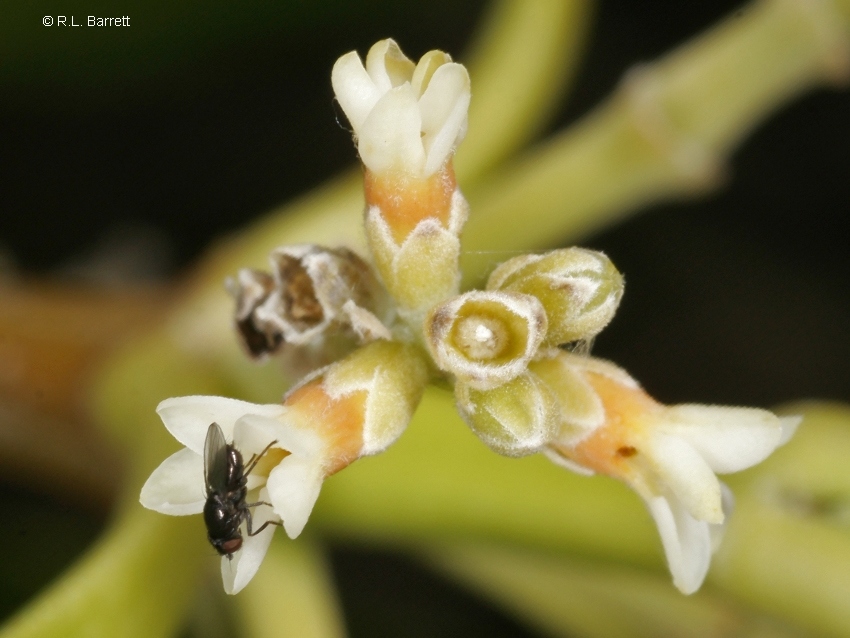
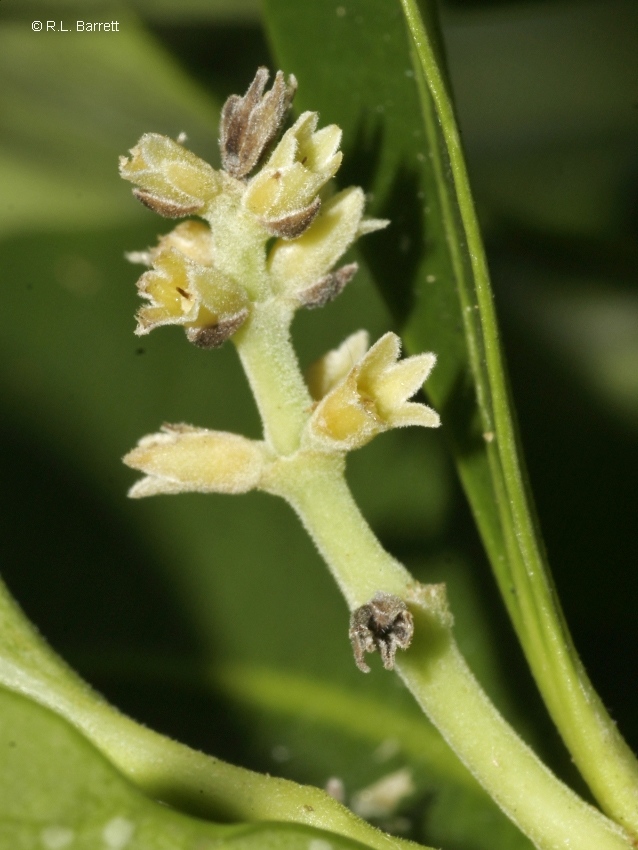
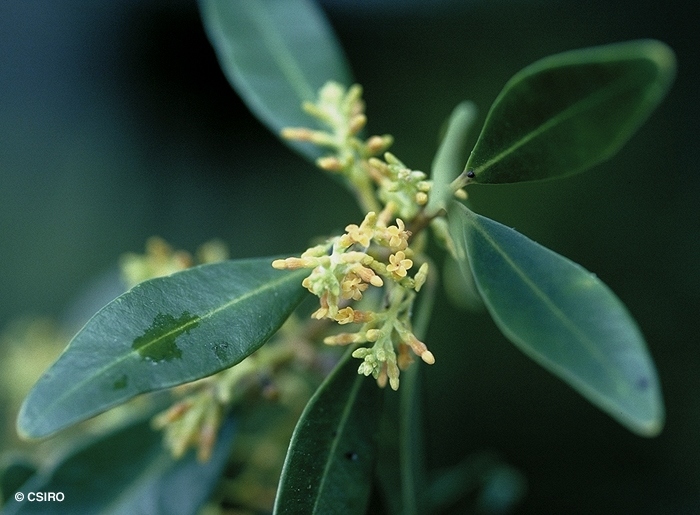
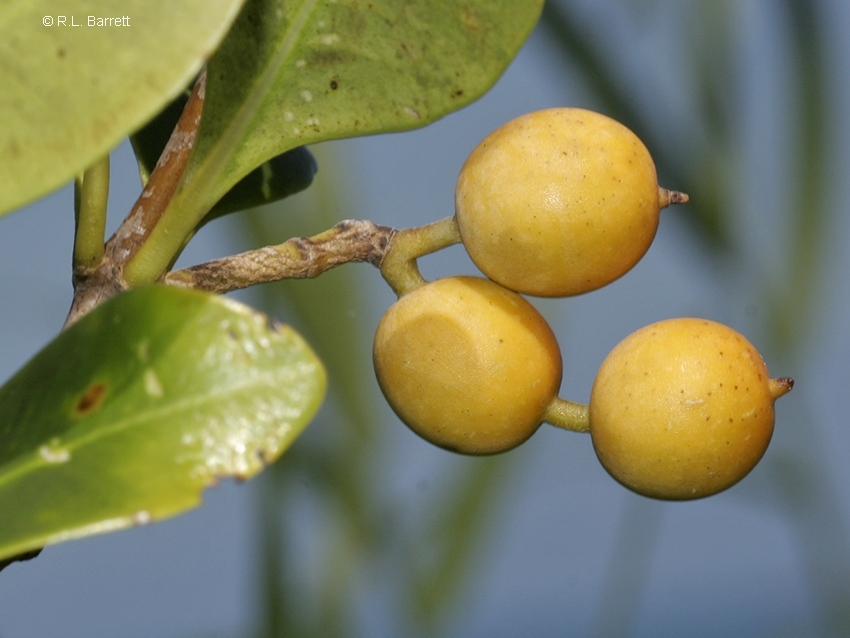
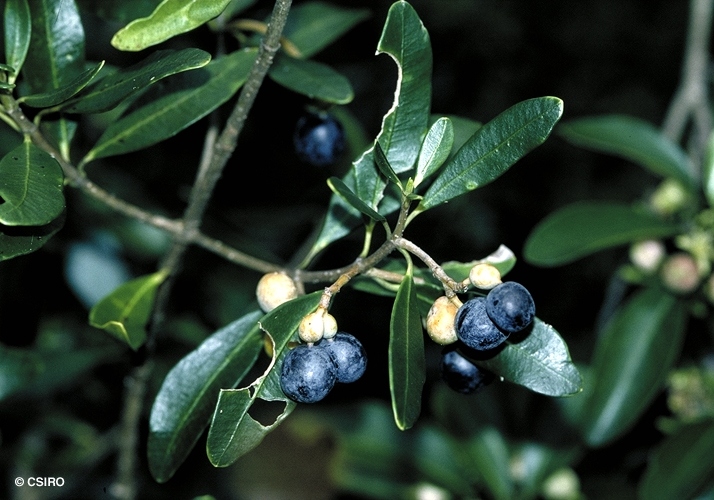
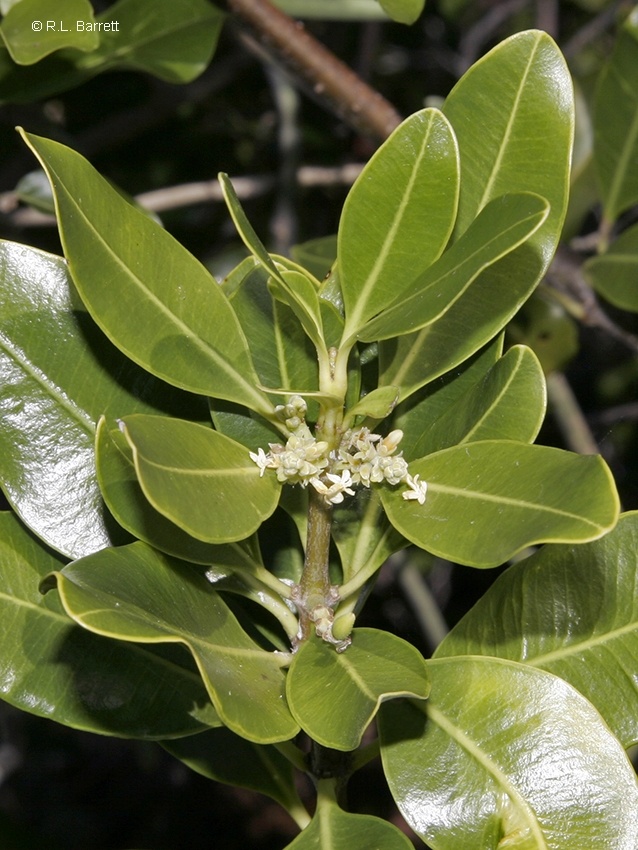
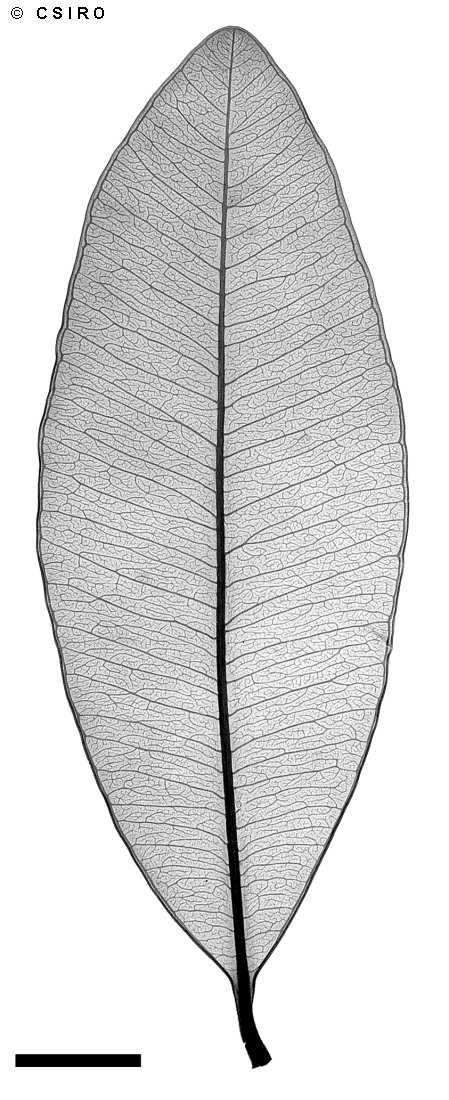
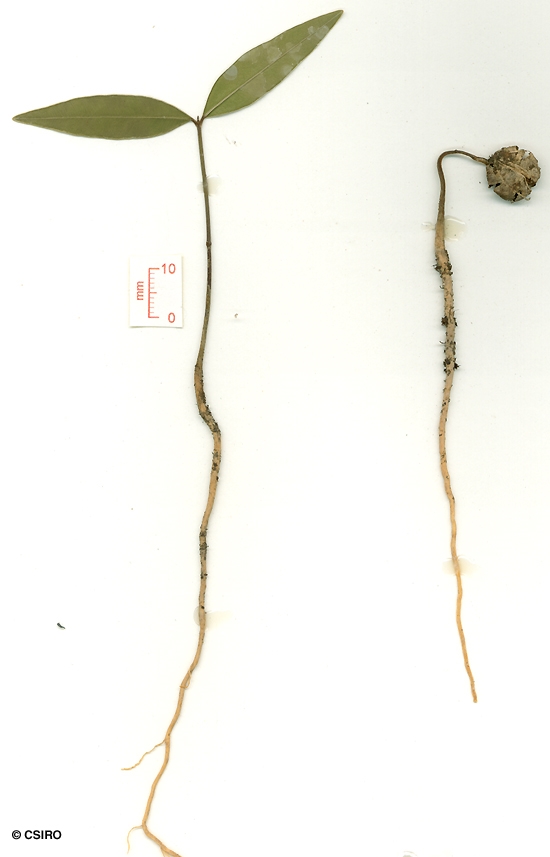

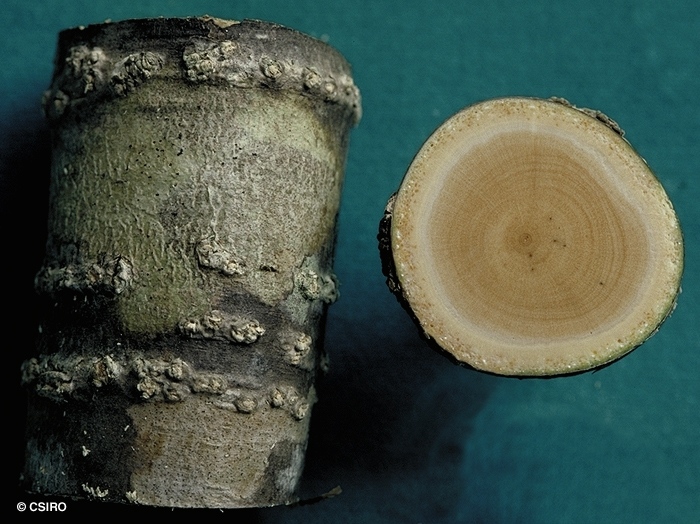
Brown, R. (1810) Prodromus Florae Novae Hollandiae : 470. Type: N. T., Vanderlin Is., R. Brown (2857); lecto: BM; iso: K. Fide Forster (1992), Austral. Syst. Bot. 5: 569.
Chain Fruit
Can grow into a vine but usually flowers and fruits as a shrub particularly in exposed situations. Vine stem diameters to 3 cm recorded. Lenticels often arranged in horizontal lines. Exudate not very copious. Outer blaze quite hard and granular.
Twigs and petioles produce a milky exudate. Twigs marked by light brown elongated lenticels. Leaves usually in whorls of three or four. Generally four per whorl on orthotropic shoots and three per whorl on plagiotropic shoots. Leaf blades variable in size, about 6.5-8 x 2-3 cm, venation difficult to discern. Petioles about 0.6-1 cm long.
Flowers about 3-4 mm diam. Calyx hairy, lobes about 0.9-2 mm long. Corolla tube usually orange, about 2.5-3 mm long, glabrous on the outer surface, but pubescent below the stamens on the inner surface, lobes usually cream, about 1.5-2 mm long. Stamens inserted in the corolla tube. Anthers narrowly cordate, about 0.5-0.7 x 0.2 mm, tapering to a fine point at the apex. Ovary very hairy.
Fruits black when ripe but yellow or orange before maturity. Fruits often moniliform, each 'bead' about 10-12 x 10 mm. Peduncle about 2-2.5 mm diam. Testa longitudinally striped. Cotyledons much longer than the radicle. Endosperm orange, deeply ruminate.
Hypocotyl hairy. First pair of leaves stipulate, lanceolate, about 37 x 9 mm with more than 20 veins on each side of the midrib. At the tenth leaf stage: most seedling parts produce a milky exudate when cut or broken. Stipules small and inconspicuous, about 1 mm long. Lateral veins numerous, about 40 on each side of the midrib. Midrib raised on the upper surface of the leaf blade. Leaves arranged in whorls of three from about the 7th to the 10th leaf. Stem clothed in short erect hairs. Seed germination time 70 to 89 days.





